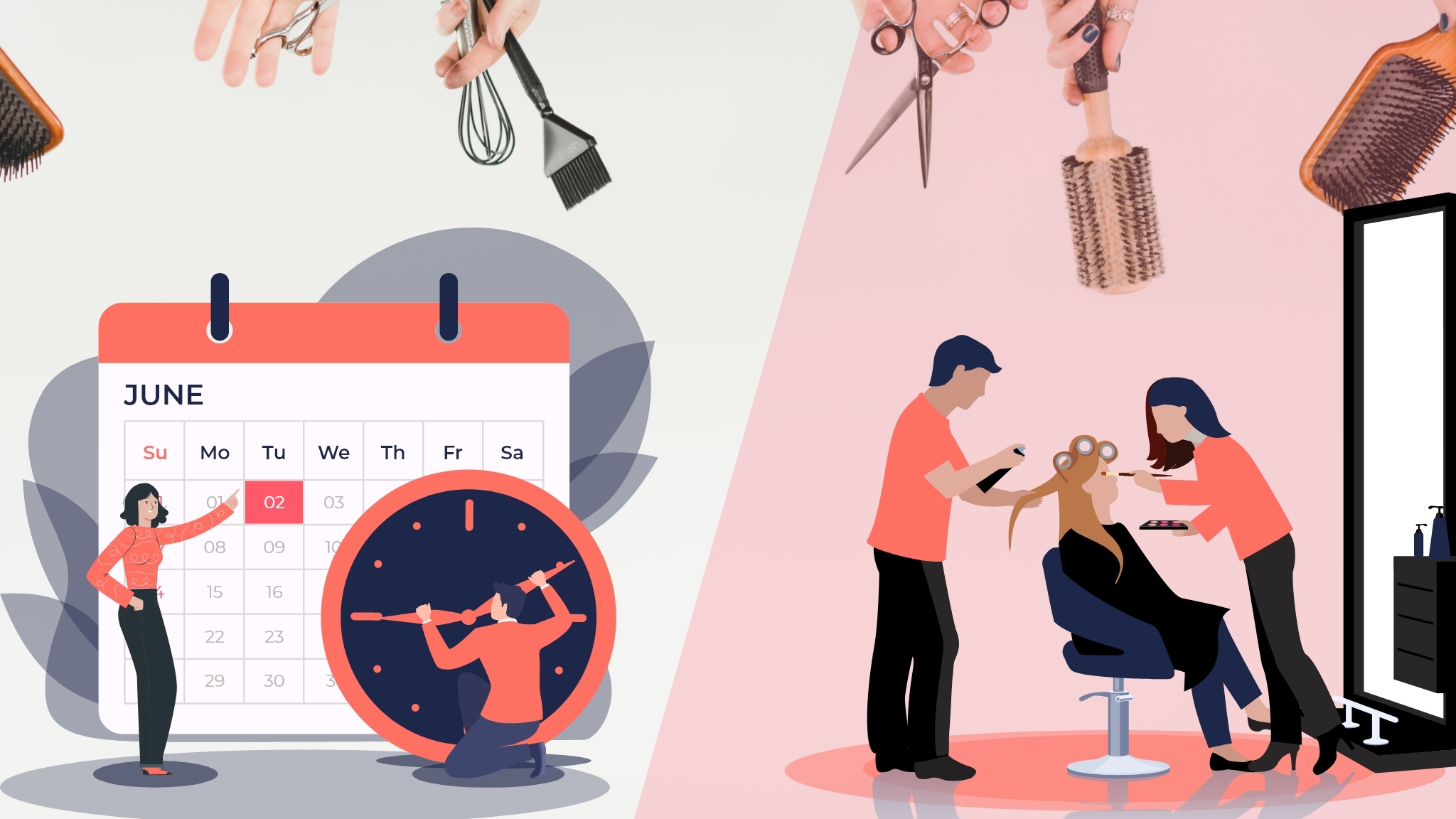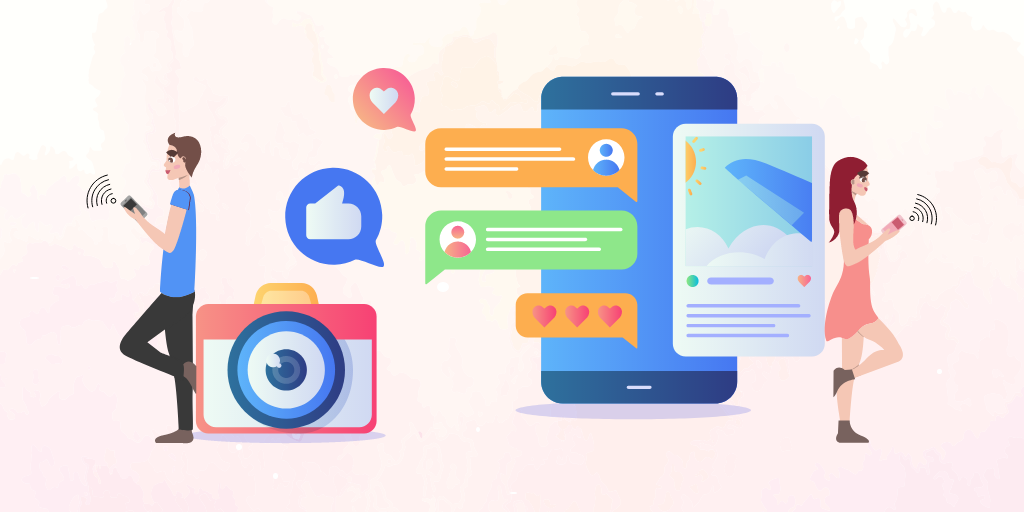Don't miss the chance to work with top 1% of developers.
Sign Up Now and Get FREE CTO-level Consultation.
Confused about your business model?
Request a FREE Business Plan.
How to Build a Marketplace App like Thumbtack: The Ultimate Guide
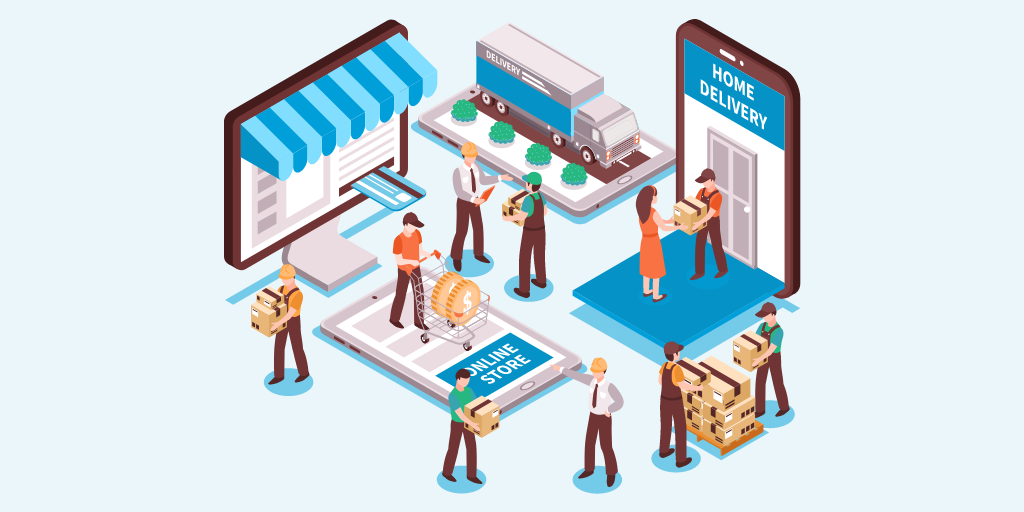
Launched in 2009, Thumbtack is currently valued at over $1 billion and has reported revenue of more than $100 million — no doubt why people call it the Amazon of the online home services market.
Thumbtack is an online marketplace that connects people with local professionals for their household needs. The app provides an easy-to-use interface, fast services, and amazing value propositions for each of its stakeholders.
It is not just the users and service providers who are in deep love with apps like Thumbtack because of the convenience they provide. Budding entrepreneurs are also influenced by the revenue-centric business model of such apps.
If you are one of those who are trying to win the billion-dollar online home service market with your app idea, this guide is for you.
Here, we will uncover what it takes to create an iconic marketplace app like Thumbtack and why it is a good idea while giving you a sneak-peak of the present state of this market.
So let’s get started.
Why Build a Home Service App Like Thumbtack?
The idea of building a powerful marketplace app has been a hit since the launch of Amazon. These platforms provide great convenience to people who want to purchase services or products while sitting at their homes with a few taps and that too at affordable prices.
With a few clicks, you can find great deals online that lessen your stress and let you live life hassle-free. However, there is more to why building a marketplace like Thumbtack is a great idea. Let’s find out.
1. The On-Demand Home Services Market Around the World is Soaring
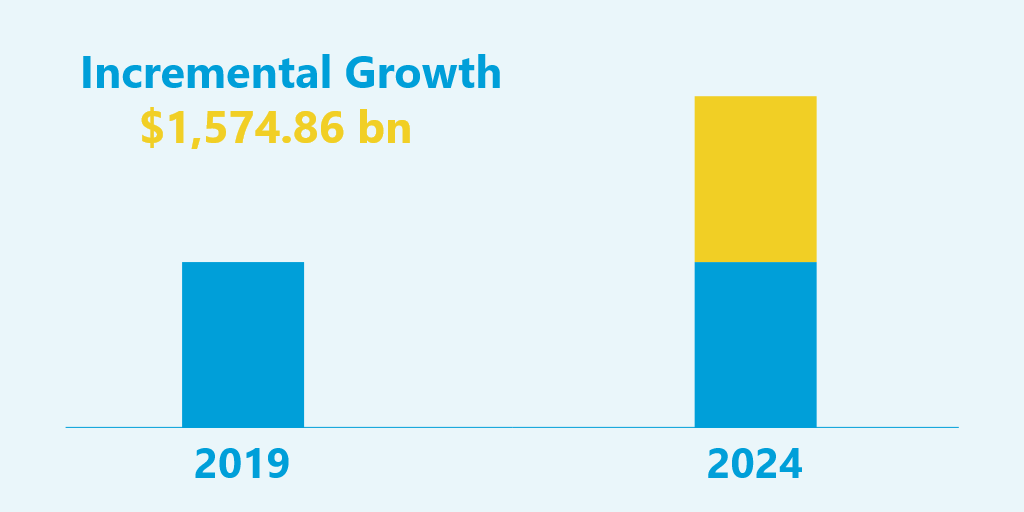
According to reports, the worldwide on-demand home service market is expected to grow at a CAGR of 53% up to $1,574 billion during 2020-2024. It means endless opportunities are awaiting budding entrepreneurs who want to flourish using their on-demand app idea like Thumbtack.
No doubt, sensing the potential of the market, more and more entrepreneurs will try to establish themselves in the arena. However, with the right approach, you can win the market share and earn billions.
2. User Spending on Online Marketplaces is Increasing

In the USA alone, over 22.4 million users are spending around $57.6 billion on on-demand services. Out of this amount, $35.5 billion is spent on online marketplaces alone, which shows their popularity among users.
Thus, keeping in mind the user’s spending habits, building an online marketplace is never a bad idea to earn huge profits.
3. The Demand for Online Home Services is Rising
Due to rapid urbanization in developed as well as developing countries, the lifestyle of people is undergoing a major change. Owing to busy schedules, neither people prefer to do home chores themselves nor do they have the time to go out and look for local service providers. As a result, they turn to on-demand service apps like Thumbtack.
Thus, on-demand industry revenue for home services will reach $869.95 billion by 2022, with each sector of the market contributing to the overall revenue generated.
If we believe statistics, the demand for washing and dry cleaning services will increase by 3.4% in this period. Moreover, the plumbing market and flooring segment will see a rise of 12% and 5%, respectively — signaling the overall increase in demand for home services apps.
Now that these stats have helped us understand the potential of the growing home service app market, it is good to proceed towards planning to build your own app like Thumbtack.
A Step-by-Step Guide to Building a Thumbtack-Like App
If you are aiming to enter the on-demand service app space, you have to keep one thing in mind – the consumers of this market desire convenience at the ease of a button and at affordable prices. And building such a business that offers these things requires a lot of knowledge and considerable resources.
So, let’s get started and walk you through the process of how you can build a successful on-demand home service marketplace app like Thumbtack.
Step 1: Product Discovery: Understand the Potential of Your Idea
If you are thinking of building a Thumbtack clone app, the chance of your product getting downloads and love from users is a bit less. Are you asking, why?
Well, this way, you will be committing a mistake because of which several products fail. Solving a problem that has already been solved, is a huge mistake. People already have access to the Thumbtack app and they aren’t interested in a new one with an unfamiliar interface.
There are over 30,000 new products that get released every year and 99% of them fail – Harvard Business School professor, Clayton Christensen
Therefore, you will have to do something different and offer that Thumbtack isn’t offering. For example, you can add some new home services for your users or let them do the search differently. Alternatively, you can integrate some high-end technologies into your app to make it more useful.
Now, no matter what you decide to do differently you have to validate the scope of your idea, something that can be done during the Product Discovery phase only. But what is that? Let’s know.
What is Product Discovery?
Product discovery is a process of determining the market needs of your solution. It is an iterative process during which you focus on understanding the problems of your users and on finding effective solutions to solve them.
It has the following six phases:
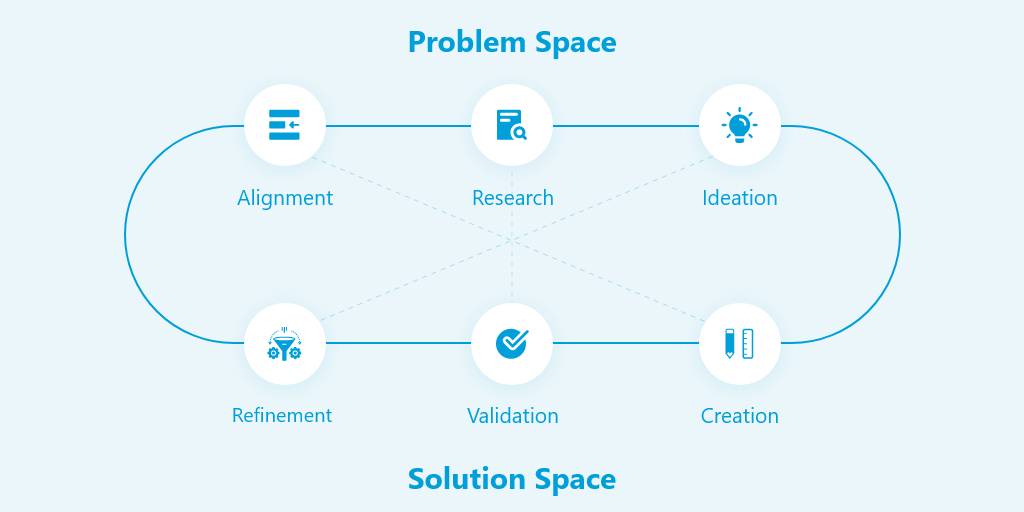
Product Discovery is not a linear process. And, by the end of the discovery phase, you may end up deciding to not move into the development phase with your product idea because there isn’t a user need.
Therefore, before you start with your home service app development, you must understand your target audience. You can do so by either conducting user interviews, and surveys, or making user personas and storyboards.
Define what problems they are currently facing and how your Thumbtack-like app is going to solve them and then move to the next step.
Step 2: Keep an Eye on the Major Market Players
As seen above, the online home service app market is huge and has immense potential. Therefore, it is obvious that you will have to face a lot of competition to reach the pinnacle of success.
Along with consumers, it is equally crucial to know what your competitors are doing, what are their strategies, and business models, and how they bring money to the table. Performing competitor research helps you find the latest trends and technologies in the industry and you don’t feel abandoned with no idea of what to do.
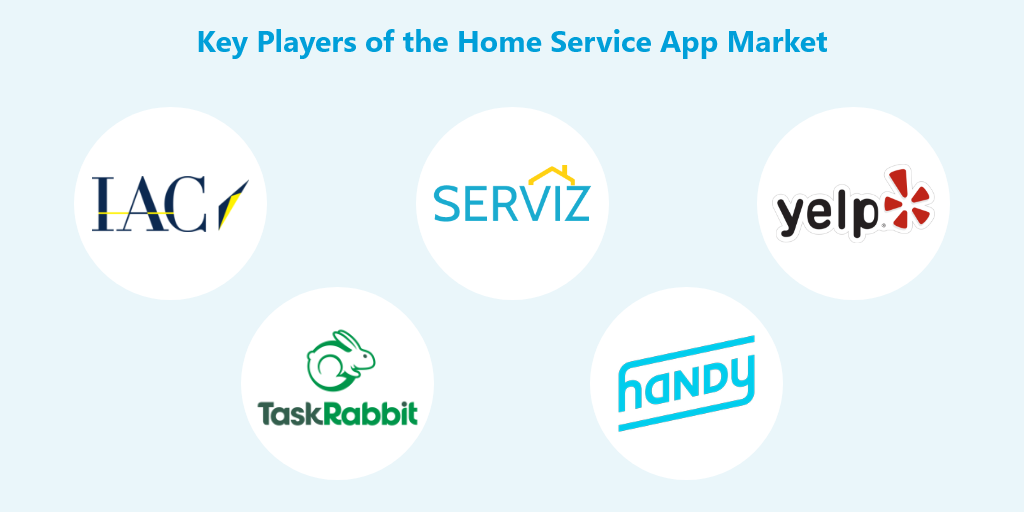
Step 3: Decide Your Business Model
To set up a successful business, you must build a strong business model and use it religiously to run your operations. It gives you a clear view of:
-
- Who your customer segment is?
- What value proposition your business provides?
- How you are going to earn money? and much more.
Generally, on-demand home service marketplaces have three types of business models:
1. Transaction-Based Model
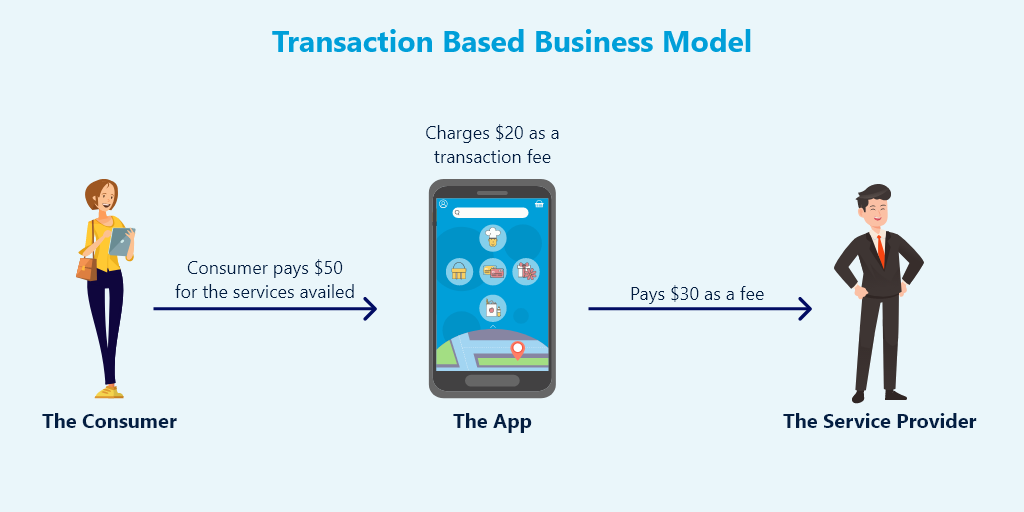
As the name suggests, in this business model, the platform cuts a fee from every transaction generated through the platform. This business model is best for making your application scalable.
The more transactions occur, the more will be the revenue. The best example of a home service app using this model is the biggest competitor of Thumbtack, i.e. TaskRabbit.
2. Subscription-Based Model
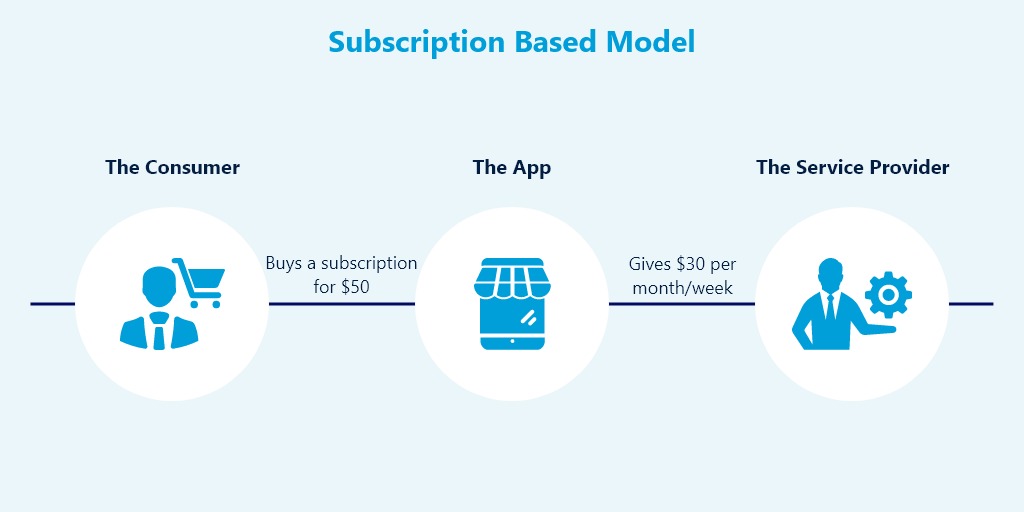
This business model is best for apps that aim to provide resources for daily household services. These platforms bill the users repeatedly and users get their services as per the schedule selected by them (e.g., every day or twice a week).
For example, Alfred is an application that operates using this business model and bills its clients based on the services they avail in a month.
3. Lead-Based Model
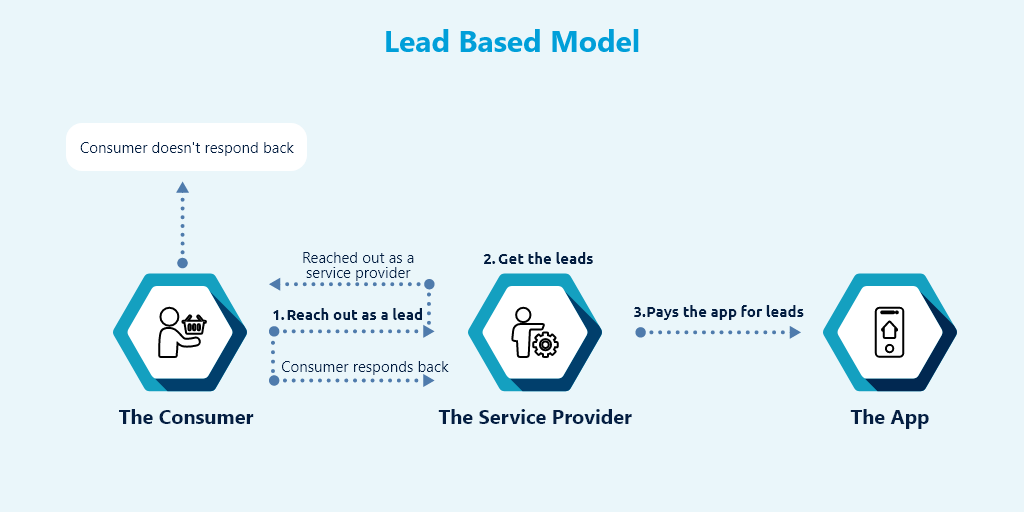
Lead-based models work a bit differently from the above-mentioned two models.
Here, the platform introduces professionals and customers based on the specific needs of the project. Professionals make bids on specific jobs and if a deal closes or the customer reaches out to them – they pay, depending on the type of service the customer is looking for.
This business model works well for many platforms. For example, Thumbtack used to operate using a transaction model earlier. However, it failed as it wasn’t making enough profits and found it hard to stay in the loop after both parties meet each other. Consequently, it now operates using a lead-based model, which has two revenue modes or streams:

Paying for Leads:
In this mode, professionals pay to set their target audience and to show up in the top results when a customer searches for pros. A customer then reaches out to one of the listed professionals. This is also called exact match leads as professionals here decide they want people needing a specific type of service or belonging from a specific location.
Paying for Opportunities:
In this mode, professionals search for customers depending on the type of job and their expertise in the same. All opportunities show prices upfront. Professionals quote the customers for the job and pay Thumbtack only if the customer replies.
As platforms using this model don’t ask users to pay any fee, it is easier for such platforms to increase their user base faster. On the other hand, it gives professionals a very good online presence for free and charges only for the benefits pros get – a win-win deal for everyone.
Depending on the type of services your app will list, you can select your business model and move to the next step in turning your Thumbtack-like app idea into reality.
Step 4: Find a Suitable App Development Company
Now that you know your product’s scope, business model, and competitors, it is time to set up an irresistible user experience that hooks your users and restricts them from using the competitor’s application.
You can do this with the help of a reliable Thumbtack-like app development company, which knows the nitty-gritty of this industry. Here is a list of questions that you should ask a mobile app development company before hiring. Remember, app developers can make or break your idea. So, be extra careful when you make the pick.
Step 5: Build an MVP
Just like Rome wasn’t built in a day, your app can’t be developed in one go. And if you plan to do so, you will fail. That’s why we suggest building a Minimum Viable Product (MVP) for every one of our clients.
It lets you focus on building the core features of your app. You can also test your MVP to know how your target audience will react to your app idea – all while investing less amount of money and resources. You can check out our Ultimate Guide on How to Build a Minimum Viable Product to know the entire process.
Let’s now see the MVP features of an app like Thumbtack or TaskRabbit in our next section.
10 Must-Have Features of a Thumbtack Like App

1. A Seamless App Onboarding Experience
As seen in the above sections, the competition in the on-demand home service industry has skyrocketed. Resultingly, it becomes increasingly important that you take the app user experience seriously.
The first step is setting up a seamless app onboarding experience. You must make sure that the moment your users launch your app, they feel relaxed and not overwhelmed with whatever services you offer.
Try to give them several options to register in your app. This includes Gmail, social media, and phone numbers. But, make sure to create a secure experience so that users feel safe when availing your services.
2. Service or Category Pages
The second most important feature that must be there in your app like Thumbtack is a service and category page. On the first landing page itself, you should give the users a list of services to select from.
You must also have a navigation bar that defines the type of services your app provides. Moving ahead, upon clicking a particular service, users must be redirected to service or category pages.
These detailed pages must provide them with all the details of the service, charges, and suggestions of professionals with their ratings and reviews.
3. User and Professional Profiles
To be able to book a service and serve as a professional, your app must provide easy profile creation options. Users, as well as professionals, must be able to add information about themselves to their profiles.
For example, in a user’s profile, one must be able to add details like name, address, and professional services required.
Similarly, a professional must be able to add her name, expertise, areas preferred, current location, availability, and so on. It will help customers choose a professional who is more close to them and will make them confident about the services she provides.
4. Search Filters
As mentioned above, you must not overwhelm your users by presenting them with a slew of services in one go. This way they might feel lost in your app.
Therefore, providing them with an option where they can search for a specific service without any hassles is crucial.
Give them various kinds of filters which would facilitate the process. Search filters, for example, finding the specialist based on distance, cost and expertise would improve the user experience impressively.
5. Booking
This feature is useful for professionals and service providers both.
The users would utilize this function to book instantly or plan it for some other time. They can likewise reschedule the service if they are not available at home during the time frame or meet with an emergency after asking for the service.
On the other hand, through the features, the professionals can see the appointments that they have gotten. They will likewise be given the choice to either accept or cancel it depending upon their availability.
6. Push Notifications
Making the correct use of push notifications and other similar options to increase your app engagement rate is another thing to invest in when building a home services app like Thumbtack.
These catchy short messages or suggestions will compel your app users to click your app icon and open it to see what’s in store for them. It will also help you decrease your app churn rate and will let you hook your app users for a long time.
7. In-App Messages
The importance of messages over calls is known to all – they save time and let you do more in less time. In your application as well, professionals and users must be given the possibility to connect with one another continuously through the in-application messages. The one thing to note here is that the platform you provide them to interact with each other must be safe and encrypted.
8. Multiple Payment Options
While you can generally provide users the alternative to pay for the services from home, nothing can beat the solace and simplicity of giving an in-application payment functionality.
By providing your users the ease to pay for the services they avail in a safe platform, you give them one more reason to engage with the application.
9. Customer Support Section
To ensure your users are satisfied, the communication channel between you and them should always be open.
The customer care section of the application should be presented clearly in your application so that the users must not have a hard time finding the same.
This section of the application should also contain a FAQ part, where all the stakeholders should be able to discover answers to their inquiries themselves, without any assistance from your end.
10. Rate & Review
After users avail a service, you must give them the option to add their experience to the app. This feature will let users rate and review the service providers, which in turn will help you improve your services and other users while selecting a professional.
While the above-mentioned were just the MVP or must-have features of an app like Thumbtack, there are some advanced features as well for such apps. Once you are done building a minimum viable product, you can consider improving it by adding features like Siri-enabled bookings, custom job creation options, and in-app purchases to add more value to your app.
Now that you know what are the important features of an app like Thumbtack, let’s move forward and compare it with one of its biggest competitors TaskRabbit.
Thumbtack vs TaskRabbit

Thumbtack and TaskRabbit are neck-to-neck competitors. While both these service-based mobile apps are successful and bring a lot of money to the table, they operate very differently and it’s hard to say which one is doing its job best.
TaskRabbit was acquired by IKEA while Thumbtack still runs its business independently. The major difference between their business models is that Thumbtack works with expert service providers while TaskRabbit lets general people earn an income by helping people nearby complete their home chores.
Thumbtack works using a lead-based business model and TaskRabbit uses a transaction-based business model. While both these business models have their own advantages and disadvantages, you have to select the one that best fits your needs and complements the overall working of your application.
Both these apps have selected their own models and are in business for over a decade now. So, instead of comparing both of them against each other and thinking about which way should you go, it is better for you if you take lessons from both of them and create your own app that has plus points of Thumbtack as well as TaskRabbit.
Conclusion
Now that you have seen building a marketplace app like Thumbtack is actually a good idea, especially when it has such a huge potential, and people are willing to stay home more than ever before. Nobody these days would risk going out to just find a professional, for let’s say their plumbing needs.
However, looking at the leaders of the industry, do not forget to do some research on your user’s needs and challenges in the market you are trying to take over. It is important to study success as well as failure stories before making an entry into any business and the home service market is no different. It has its own flaws and challenges.
So, make sure you collect some market insights before starting development to cover the desires of your target market. While we have given you an overview of the entire market and how you can build an app that people love, it is still much more that remains to be done in order to become successful.
Being one of the leaders in creating on-demand apps, we at Apptunix, take pride in helping our clients fulfill their dreams of launching apps that actually scale and generate revenue. If you too are willing to do the same, just stop by and see what our experts have to offer. To sweeten the deal for budding entrepreneurs, we also provide free consultation services.

Rate this article!
(2 ratings, average: 5.00 out of 5)
Join 60,000+ Subscribers
Get the weekly updates on the newest brand stories, business models and technology right in your inbox.
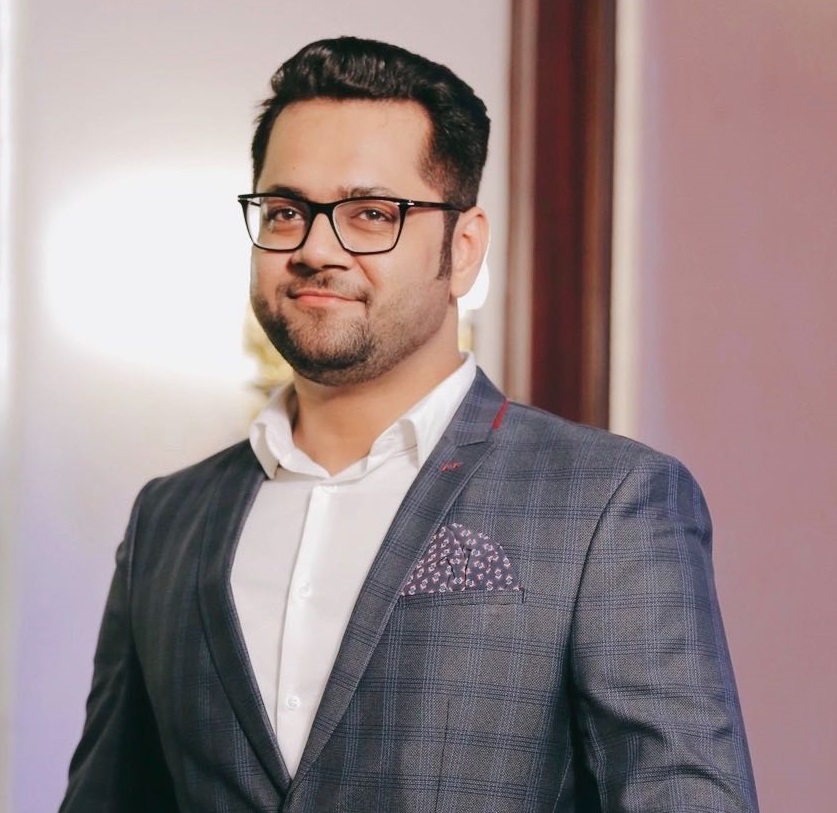
Nikhil Bansal is the Founder and CEO of Apptunix, a leading Software Development Company helping startups as well as brands in streamlining their business processes with intuitive and powerful mobile apps. After working in the iOS app development industry for more than 10 years, he is now well-equipped with excellent problem-solving and decision-making techniques.

Telemedicine 2.0 - A Comprehensive Guide On What Healthcare Providers Need To Know?
Discover how the latest advancements like Artificial Intelligence in telemedicine are reshaping patient care. This comprehensive resource offers insights into the key trends and innovations driving this shift, providing valuable knowledge for healthcare professionals looking to stay ahead.
Download Now!Take the First Step
Towards Success!
Master app development with a
30-day FREE trial of our premium
solutions.
